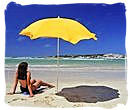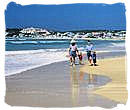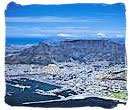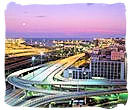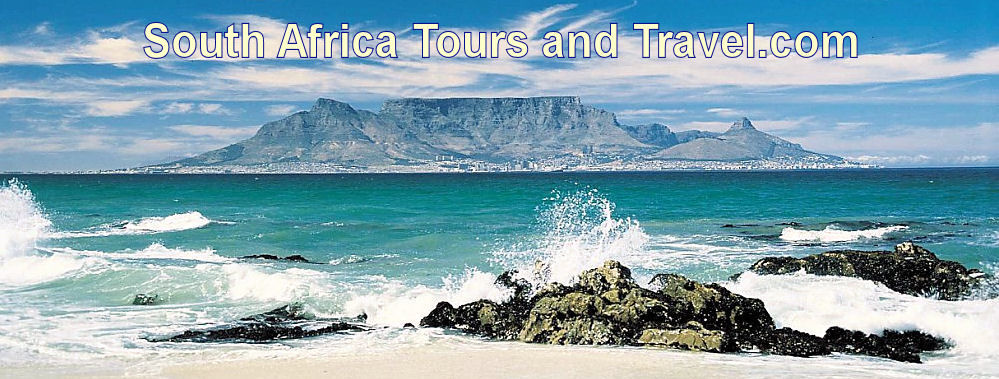 |
|||||||||
City of Johannesburg South Africa, |
|||||||||
Start with getting a first impression by watching this short video clip
It was the discovery of gold in 1886 that brought about the transformation of a vast grassy expanse scattered with kopjes (small hills) and ridges in to a huge metropolis in no more than 125 years. The region was named "Witwatersrand", meaning "White waters ridge". However, there are no white water features around the Johannesburg area.
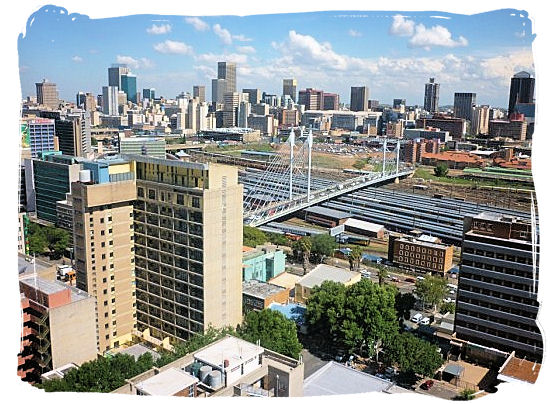
View of the Johannesburg Central Business District from Braamfontein
City of Johannesburg South Africa, Tours and Travel guide
It is believed that the name refers in fact to an optical illusion, caused by quartzite rocks wet from the rain, looking like glistening water. The word "Witwatersrand" was almost to become a synonym for the word gold. And so when fortune seekers from all over the world flocked in, as part of one of the greatest gold rushes the world has seen, Johannesburg was born right on top of one of the world's richest goldfields.
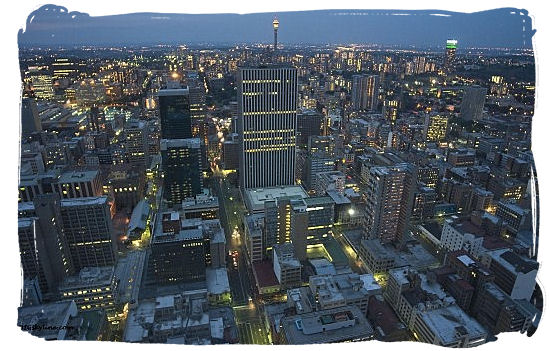
View of Johannesburg CBD at dusk
City of Johannesburg South Africa, Tours and Travel guide
copyright © South African tourism
According to a Government survey of 2007, the population of Johannesburg within city boundaries came to a figure of 3,888,180 in that year and for the Greater Johannesburg Metropolitan area to a figure of 7,151,447, almost double. If you widen the metropolitan area to what is known as the Witwatersrand by including Soweto, the West Rand, Ekurhuleni, and Lenasia, you talk of a population of 10,3 million people. The land area within the city boundaries measures 1,645 sq km (635 sq mi), which is large in comparison to other cities. The population density is relatively low, a figure of 2,364 per sq km (6,120 per sq mi).
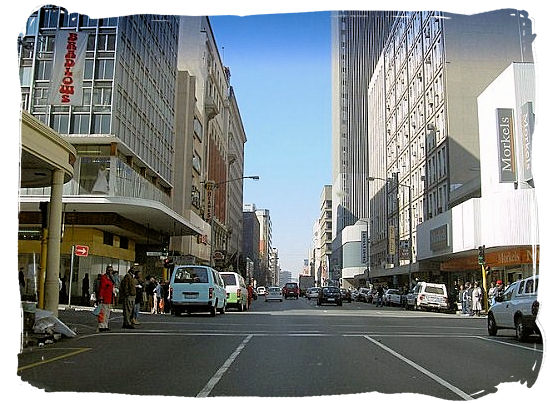
Street in Johannesburg central business district
City of Johannesburg South Africa, Tours and Travel guide
The Johannesburg metropolitan area includes the township Soweto. The word Soweto is an English abbreviation for "South-Western Townships". Right from the first gold mining days, the native Africans that came to work in the mines, were put up in separate communities on the outskirts of Johannesburg, which ultimately developed into the black townships as we know them today such as well-known Soweto. Under the Apartheid regime (1948-1994) Soweto became a completely black city, separate from "white" Johannesburg. It was finally incorporated in Johannesburg after the new democratic government that came into power in 1994.
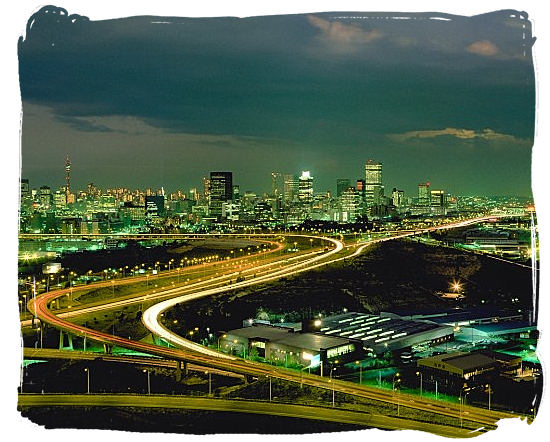
Skyline of Johannesburg, the City of Gold, at night
City of Johannesburg South Africa, Tours and Travel guide
copyright © South African tourism
Gold and money are still the driving force in this city, creating a booming and happening environment, attracting those that are looking for opportunities to make money and realize their dreams. It has made Johannesburg the hub of South African commerce and mining, home to the headquarters of South Africa's major financial institutions, mining houses and a variety of multinational corporations and also the main gateway to sub-Saharan Africa. Health care, telecommunications, road infrastructure, dining, nightlife, visitor attractions and accommodation are of world class standard.
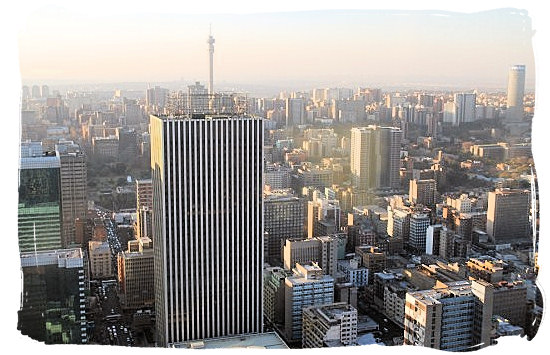
Early morning in Johannesburg
City of Johannesburg South Africa, Tours and Travel guide
Top of page
